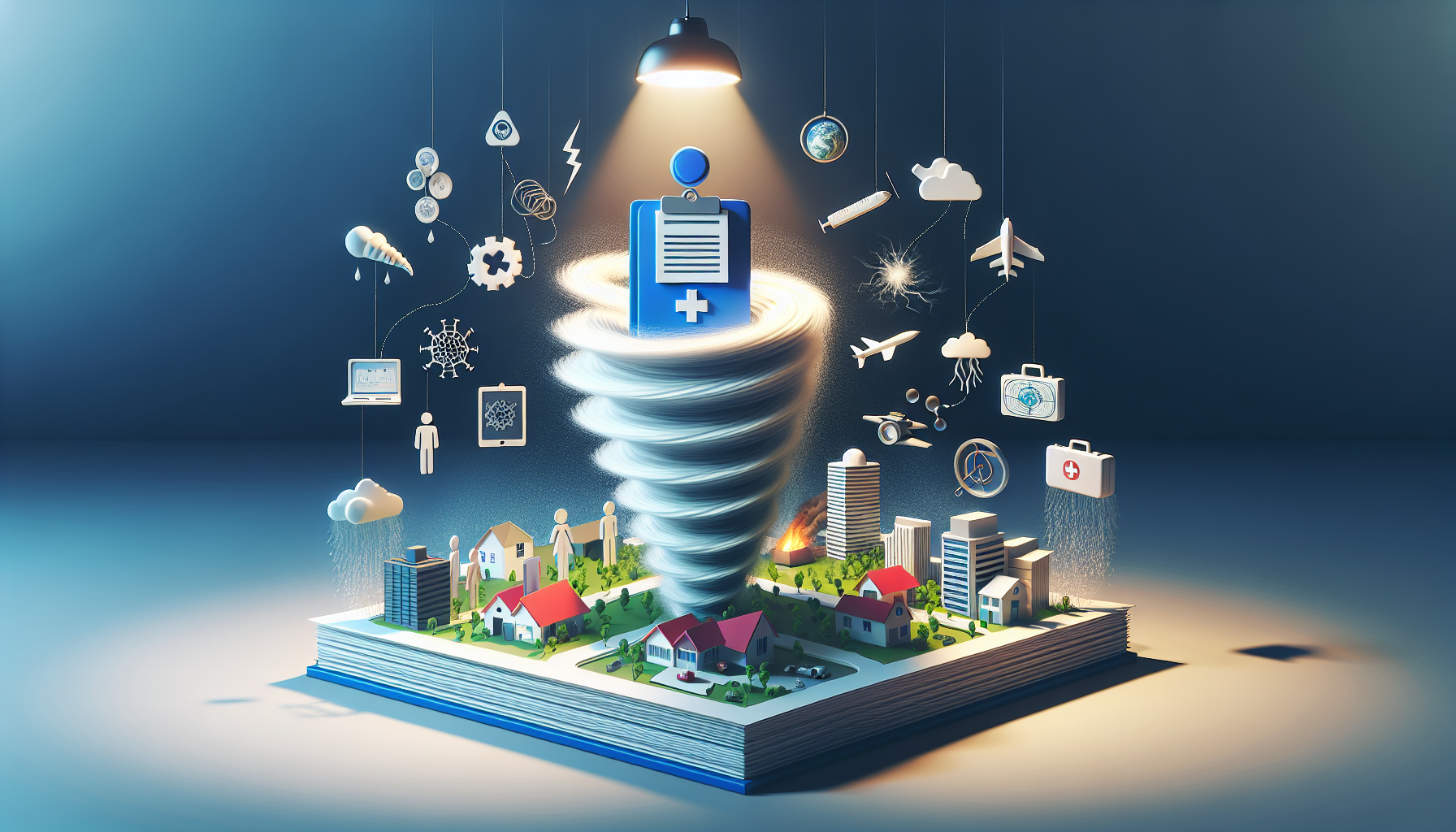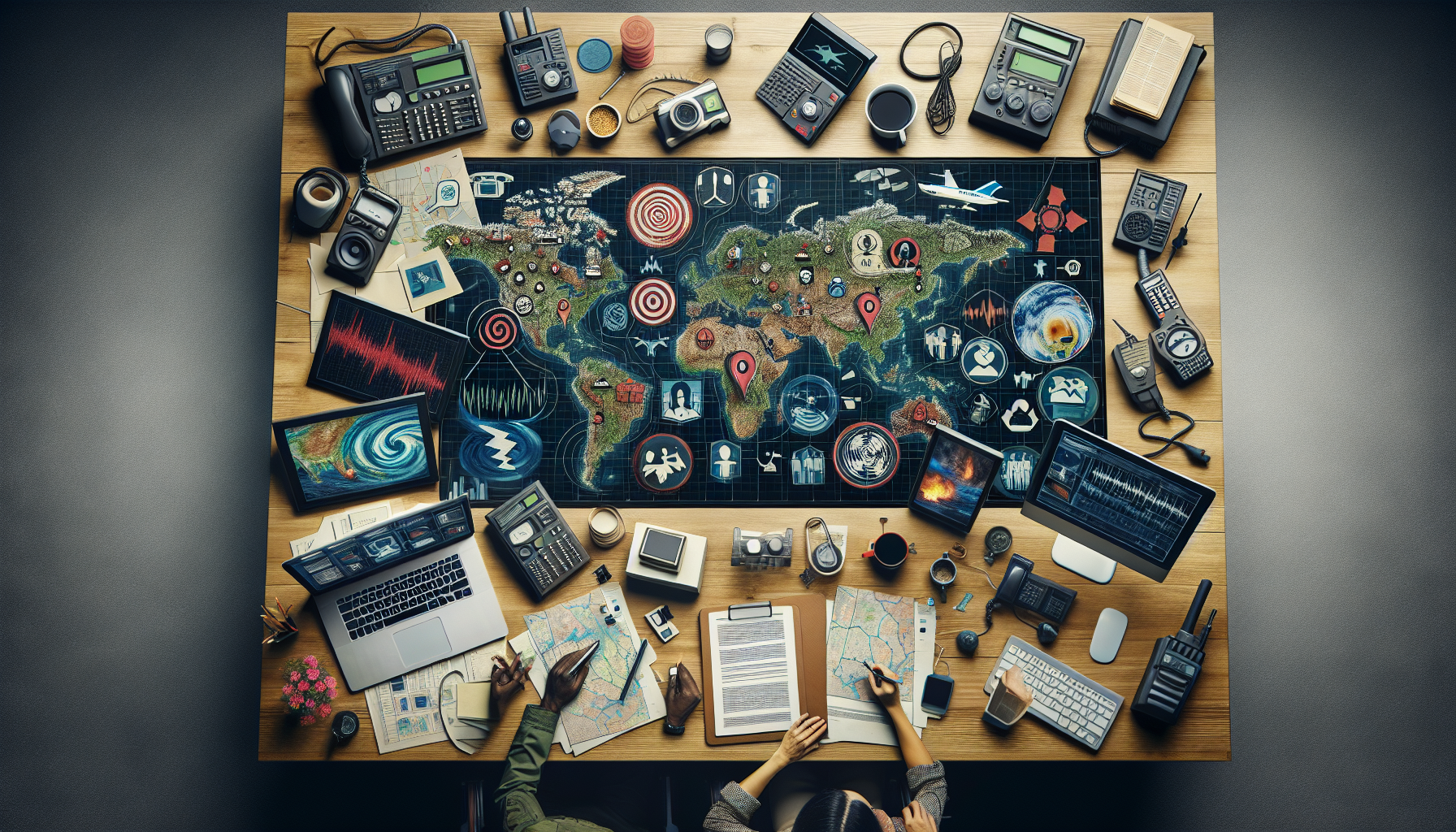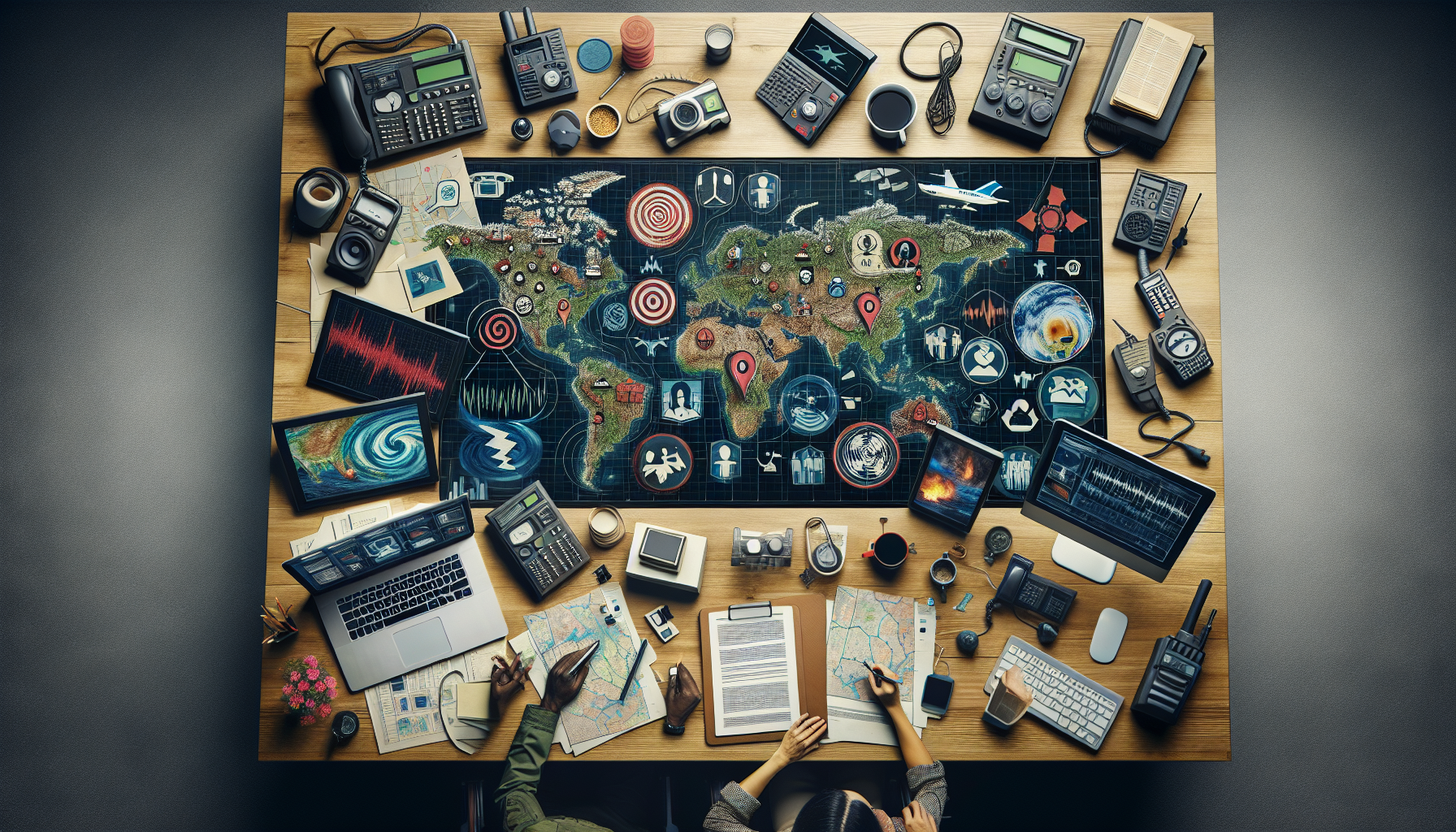So, you’ve probably heard the term “emergency planner” before, but you might be wondering exactly what it means and why you would need one. Well, an emergency planner is your go-to guide for preparing for unexpected situations. Whether it’s a natural disaster, a home fire, or even a pandemic, an emergency planner can help you navigate through the chaos and ensure that you and your loved ones have a plan in place. But what should be included in this planner? Can it be customized for your specific needs? And where can you find reliable resources to fill it out? Don’t worry, we’ll answer all these questions and more as we explore the world of emergency planning. So, let’s get started and prepare for whatever comes our way!
What is an emergency planner?
Definition
An emergency planner is a proactive individual who takes on the responsibility of preparing for and managing emergency situations. Their primary goal is to minimize risks and ensure the safety and well-being of themselves and others during a crisis.
Role and Responsibilities
The role of an emergency planner is multifaceted and requires a diverse skill set. They are responsible for developing and implementing emergency procedures and protocols, coordinating communication efforts, and managing available resources. Additionally, an emergency planner plays a crucial role in making quick decisions and facilitating the evacuation process if necessary.
Importance of having an emergency planner
Being prepared for emergencies
Having an emergency planner in place ensures that you are well-prepared for any unforeseen circumstances. By proactively thinking through potential emergency scenarios, you can develop a comprehensive plan to address each situation effectively. This level of preparedness empowers you to respond confidently and efficiently when faced with an emergency.

Minimizing risks and damages
An emergency planner’s main objective is to minimize the risks and damages associated with emergencies. By identifying potential hazards, evaluating vulnerabilities, and implementing appropriate preventative measures, an emergency planner can significantly reduce the impact an emergency can have on individuals and communities. This proactive approach can save lives, protect assets, and prevent further destruction.
Ensuring the safety and well-being of yourself and others
One of the primary responsibilities of an emergency planner is to ensure the safety and well-being of all individuals involved. Whether it’s yourself, your family, coworkers, or the general public, an emergency planner’s efforts are focused on safeguarding lives and minimizing harm. Their expertise in emergency procedures and protocols, resource management, and communication coordination are vital for maintaining both physical and emotional well-being during a crisis.
How an emergency planner can help in a crisis situation
Quick decision-making
In times of crisis, making well-informed decisions quickly is crucial. An emergency planner possesses the knowledge and expertise to assess the situation promptly, evaluate available options, and make critical decisions under pressure. Their ability to analyze risks, anticipate consequences, and consider multiple variables enables them to take decisive actions that can save lives and mitigate further damage.

Resource management
During emergencies, limited resources can become stretched thin. An emergency planner is adept at managing available resources effectively, ensuring that they are allocated to where they are most needed. This includes coordinating emergency personnel, supplies, equipment, and facilities. Their ability to assess needs, prioritize resources, and make efficient use of available assets is vital in maximizing the effectiveness of emergency response efforts.
Coordination and communication
Effective coordination and communication are essential in managing emergency situations. An emergency planner serves as a central point of contact, facilitating communication between various stakeholders, including emergency response teams, government agencies, and the public. Their role involves disseminating vital information, providing updates, and coordinating actions to ensure a cohesive and efficient response. By maintaining clear and open lines of communication, an emergency planner helps to minimize confusion, avoid duplication of efforts, and streamline emergency response operations.
Comprehensive elements of an emergency planner
Personal information and contacts
An emergency planner should include personal information and contacts in their plan. This includes full names, addresses, phone numbers, and email addresses of yourself, family members, and other individuals who may need to be contacted in an emergency. Having this information readily available ensures efficient communication and prompt assistance during critical situations.

Emergency contacts
In addition to personal information, an emergency planner should list emergency contacts. These contacts can be local emergency services (such as police, fire department, and hospital), utility providers, insurance companies, and trusted neighbors or friends who can be relied upon for immediate assistance. By having these contacts readily available, you can quickly reach out for help during an emergency.
Emergency procedures and protocols
An emergency planner should outline specific emergency procedures and protocols relevant to your location and situation. This may include steps to take during a fire, earthquake, severe weather, or other potential emergencies. By clearly understanding and practicing these procedures, you can react efficiently in high-stress situations, ensuring your safety and the safety of those around you.
Evacuation plans
Creating evacuation plans is a crucial element of an emergency planner. Identify primary and secondary evacuation routes from your home, workplace, or other frequently visited locations. Designate meeting points for family members or coworkers in case you become separated during an evacuation. By having well-thought-out evacuation plans, you can navigate safely through potentially chaotic situations and reunite with loved ones.

Emergency supplies and resources
An emergency planner should include a comprehensive list of necessary emergency supplies and resources. This may include non-perishable food, water, flashlights, batteries, first aid kits, medications, and other essential items. Regularly check and update your emergency supplies to ensure they are in working condition and adequately stocked. Having these supplies readily available can sustain you during an emergency until help arrives.
Important documents and records
Gathering and organizing important documents and records is vital for emergency preparedness. This may include identification documents (such as passports, driver’s licenses), birth certificates, insurance policies, medical records, and financial information. Keep these documents in a secure place or make copies to be included in your emergency planner. Having these documents readily accessible ensures you can quickly prove your identity, access necessary services, and handle any legal or financial issues that may arise during an emergency.
Specific needs and considerations
Every individual has unique needs and considerations. An effective emergency planner takes into account these specific requirements and plans accordingly. This may involve considerations for individuals with disabilities, medical conditions, allergies, or special dietary needs. By addressing and accommodating these specific needs, an emergency planner ensures the safety and well-being of all individuals involved.
Customizing an emergency planner

Medical conditions
If you or a family member have specific medical conditions, it is crucial to include relevant information in your emergency planner. This may include medications, dosages, allergies, and contact information for healthcare providers. By having this information readily available, emergency personnel can provide appropriate medical care in a timely manner.
Pets and animals
If you have pets or other animals, it is essential to include them in your emergency planning. This may involve identifying pet-friendly shelters or arranging for temporary care in case of evacuation. Make a list of necessary supplies for your pets, including food, water, medications, and any important medical records. By considering the needs of your pets, you can ensure their safety and well-being during an emergency.
Frequency of updating an emergency planner
Regularly reviewing and revising
An emergency planner should be reviewed and revised on a regular basis. Set a schedule to evaluate your plan at least once a year or whenever significant life changes occur. This ensures that the information and procedures in your emergency planner are up-to-date, accurate, and relevant to your current circumstances.
Considering changes in personal circumstances
Life is filled with changes, and it is essential to consider any significant personal circumstances when updating your emergency planner. This may include changes in your address, telephone numbers, or contact information for emergency services. Additionally, if there are changes in your family structure or individuals who may need additional assistance during emergencies, make the necessary adjustments to account for these changes.
Staying up-to-date with emergency procedures and resources
Emergency procedures and resources often change or get updated to reflect best practices and new information. It is crucial to stay informed about these changes through reliable sources such as government websites, emergency management organizations, and community resources. By keeping yourself up-to-date, you can ensure that your emergency planner remains effective and aligns with the latest guidelines and recommendations.
Digital vs Physical format of an emergency planner
Advantages and disadvantages of each format
An emergency planner can be created in both digital and physical formats, with each having its advantages and disadvantages. A digital format allows for easy accessibility and sharing, especially if stored on cloud-based platforms or mobile applications. It also allows for quick updates and revisions. However, reliance on technology and the potential for power outages or device malfunctions can be disadvantages. On the other hand, a physical format provides a tangible reference that can be easily accessed in the event of a power outage or technical failure. However, physical documents are more susceptible to damage or loss.
Choosing the right format for your needs
Selecting the right format for your emergency planner depends on your personal preferences, lifestyle, and access to technology. If you are comfortable with technology and have reliable access to digital devices, a digital format may be more convenient. However, if you prefer a tangible copy that can be easily accessed during emergencies, a physical format may be more suitable. Some individuals may choose to have a combination of both formats to ensure redundancy and accessibility under different circumstances.
Differences between an emergency planner and a regular planner
Focus and purpose
While both an emergency planner and a regular planner involve organization and planning, they serve different purposes. A regular planner primarily focuses on day-to-day tasks, appointments, and personal goals. On the other hand, an emergency planner focuses on preparing for and managing emergency situations. Its purpose is to ensure safety, minimize risks, and coordinate efforts during a crisis.
Content and organization
The content and organization of an emergency planner are distinct from that of a regular planner. An emergency planner includes specific information such as personal contacts, emergency procedures, evacuation plans, and important documents. It is often organized into sections or categories, allowing for quick reference and implementation during emergencies. In contrast, a regular planner may focus on time management, task prioritization, and long-term goals without the specific considerations required for emergency situations.
Applicability of emergency planner in different types of emergencies
Natural disasters
An emergency planner is highly applicable in natural disasters such as hurricanes, earthquakes, floods, and tornadoes. By understanding the potential risks associated with these events and planning accordingly, an emergency planner can mitigate risks, facilitate safe evacuation, and ensure the timely provision of necessary resources.
Home fires
Home fires can be devastating and unpredictable. An emergency planner helps in identifying fire hazards, developing fire escape plans, and ensuring that essential fire safety measures are in place. By having a well-prepared emergency planner, you can react promptly and minimize risks during a home fire.
Public health emergencies
Public health emergencies, including pandemics, require coordinated efforts and proactive planning. An emergency planner plays a crucial role in disseminating accurate information, coordinating response efforts with healthcare providers and government agencies, and ensuring the implementation of necessary precautions. By employing an emergency planner, individuals and communities can better protect themselves and mitigate the spread of infectious diseases.
Finding reliable resources for emergency preparedness
Government websites
Government websites, especially those associated with emergency services or disaster management agencies, are reliable sources of information for emergency preparedness. These websites often provide guidelines, checklists, and resources to help individuals develop their emergency plans. Additionally, they may offer insights into local emergency procedures, notifications, and available support services during an emergency.
Emergency management organizations
Emergency management organizations, both local and national, are valuable resources for emergency preparedness. These organizations specialize in providing guidance, tools, and training for individuals and communities. They often offer courses, workshops, and seminars on emergency planning and response. By engaging with these organizations, you can gain valuable knowledge and access resources that will assist you in the development of an effective emergency planner.
Community resources
Communities often have resources available for emergency preparedness. This may include local volunteer groups, neighborhood associations, or community centers that offer support during emergencies. Connecting with these resources allows you to tap into a network of experienced individuals and organizations, fostering a sense of community preparedness and resilience.
In conclusion, an emergency planner is a vital tool for ensuring personal and community safety during emergencies. By proactively planning and preparing for potential crises, an emergency planner minimizes risks, facilitates quick decision-making, and coordinates effective response efforts. Whether created in a digital or physical format, an emergency planner should include personal information, emergency contacts, evacuation plans, important documents, and specific considerations. Regularly reviewing and updating your emergency planner, staying informed about changes in emergency procedures and resources, and customizing the planner for individual needs are critical. By understanding the differences between an emergency planner and a regular planner, you can effectively utilize each tool for its intended purpose. Finally, reliable resources such as government websites, emergency management organizations, and community resources are readily available to support the development and maintenance of an effective emergency planner.

